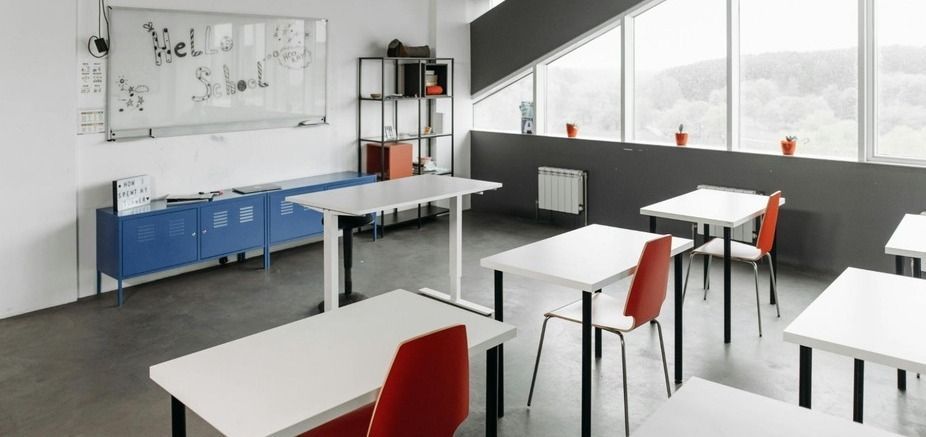Cleanliness is a basic necessity that should be offered to all environments. Whether in a retail store, office building or a school, a clean establishment is mandatory and essential to the health and well-being of the people using the space. Schools and nurseries require an extra level of care when it comes to cleanliness as children, with their developing immune systems and curious nature often leads to touching multiple surfaces, making them more susceptible to infectious diseases than adults.
In this guide, we’ll walk you through a comprehensive approach to achieving and maintaining the highest standards of cleanliness in schools and nurseries using effective janitorial supplies. We’ll also discuss how to transform these learning environments from potential health risk zones into safe spaces where children can develop safely, free from preventable health risks.
Understanding the risks of poor hygiene
Unclean and unsanitary environments can become a breeding ground for harmful bacteria that can quickly spread through a classroom, potentially endangering the health of dozens of children and staff. An unclean classroom not only impacts children's physical health but also significantly affects their overall well-being and academic performance. In fact, according to a survey, 83% of teachers felt they saw a noticeable improvement in students’ behaviour when they were in a de-cluttered and clean classroom. This shows the importance of a clean environment for students so that they can perform at their best at all times.
How can facility managers ensure a clean and safe environment for children?
The first step to creating a clean and safe environment for young learners is to highlight the health hazards and hygiene hotspots that are in schools and nursery settings. By addressing these areas, education establishments can significantly reduce the risk of bacteria transmission and create a healthier learning space for young children and staff.
Key contamination hotspots, their risks and best practices
Shared toys and learning materials
- Risks include constant handling by multiple children, difficulty cleaning thoroughly, and the risk of transmission of germs through shared contact.
- The best practice is to use disinfectants: Evans Safe Zone Plus Virucidal Disinfectant is an effective disinfectant that can tackle a wide range of viruses and bacteria. It is an ideal solution for schools and nurseries.
Frequently touched surfaces
- Risks include the transfer of bacteria through touch points such as doorknobs, door handles, light switches and other classroom equipment.
- The best practice is to use antibacterial wipes: Uniwipe Hand & Surface Wipes are specially formulated for cleaning and disinfecting hands and surfaces.
Washing facilities in bathrooms and changing areas
- Risks include: Areas with high levels of moisture can increase bacteria growth, and multiple children using the same facilities can increase the risk of bacteria transmission.
- The best practice is to use effective washroom cleaners: Evans Clean Fast Washroom Cleaner can quickly remove limescale, and stubborn soiling. It is also suitable for porcelain, chrome, stainless steel, ceramic and quarry tiles.
Kitchens and food preparation areas
- Risks include: Cross-contamination during the preparation of meals, risk of foodborne illnesses, and insufficient cleaning of utensils can increase the risk of spreading bacteria.
- The best practice is to use antibacterial sprays: Lixal Anti Bac Surface Cleaner Trigger Spray Food Safe is specially formulated for cleaning and sanitising all hard surfaces including stainless steel surfaces, microwaves, and fridges.
Establishing effective cleaning and hygiene protocols
Establishing transparent cleaning guidelines and schedules is important to maintain a clean and sanitary environment in all areas of schools and nurseries, such as playrooms, gymnasiums, playgrounds, classrooms, washrooms, libraries and staff rooms.
A regular cleaning and maintenance routine can help reduce the build-up of germs, dirt and bacteria, and also minimise the risk of diseases transmitted through shared contact. Implementing robust cleaning measures will ultimately ensure a safe and positive environment for children to thrive, and also improve their overall health and wellbeing.
Top tips for maintaining hygiene and cleanliness in education settings
- Ensure the correct cleaning supplies are available for cleaning staff.
- Provide comprehensive training to cleaning staff on health and safety protocols and the proper handling of hazardous substances.
- Implement a regular and thorough cleaning schedule.
- Use posters to encourage staff and children to practise personal hygiene, such as washing hands, using paper towels, hand sanitisers etc.
- Ensure there is an adequate supply of hand sanitisers available for all staff and children to use in all areas of the setting.
Empowering schools and nurseries to create healthier spaces
A clean and hygienic environment in schools and nurseries is one of the most important factors towards protecting children's health and wellbeing. Educational facilities can minimise the number of absenteeism caused by viruses and diseases by identifying key areas of contamination, and ensuring staff are adhering to the correct cleaning protocols and using appropriate cleaning supplies. When all these measures are put into practice, it creates a safe and healthy space for young children to focus on learning and developing.







